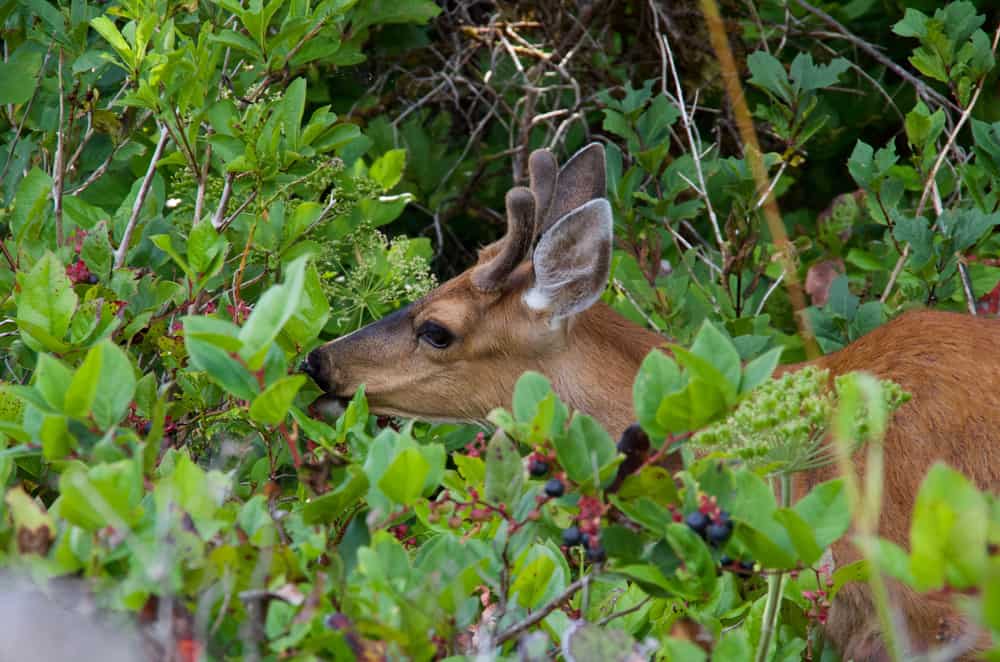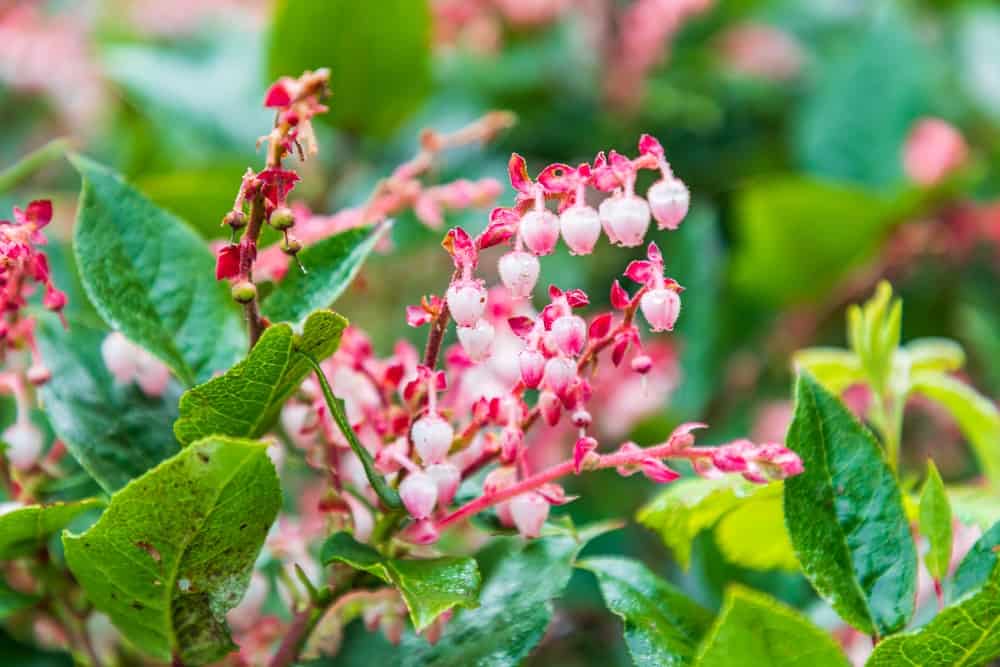We may earn a commission if you purchase an item via one of the links on this page. We do not take commissions into consideration when creating our editorial content. Here is the full disclosure, read it carefully.
The berries are a major food source for the First Nations in British Columbia, and salal may be found wild in western North America’s coastal regions. Salal is currently used as an attractive ornamental around gardens across the globe, and it can be found growing wild.
Not only as a sweet snack, but also as a healthy superfood, salal berries have a powerful antioxidant effect. This is a great herb to use if you’re interested in making herbal remedies at home.
It can do a lot of things. While it adds a lovely touch to your garden, you can harvest the berries for cooking and utilize the remainder of the plant to make a tea or salve.
So, how do you promote this magnificent shrub at home?

A Bit About Salal
How can you identify salal (Gaultheria shallon) when you’re walking through the woods? There’s a plethora of unusual plants and shrubs to spot.
These plants may grow to be up to four feet tall and five feet broad. Salal may be cultivated in USDA Hardiness Zones 6-8 and belongs to the Ericaceae family.
Waxy, leathery, egg-shaped dark green leaves characterize this perennial shrub. On this plant, you’ll see little pink and white flowers in the spring.
Black and purple berries appear soon after the flowering season begins. Hikers and animals like deer are known to snack on these berries since they taste delicious and sweet.

Of course, you can incorporate salal into your daily life without going hunting in the wild. Plants and seeds may be purchased at various nurseries across the nation. They not only look nice in the garden, but they also produce delectable berries.
Salal berries are processed into jams, spreads, and other sweet foods after being harvested. They can, however, be used as decorative accents on your homestead and feed the local wildlife.
Salal leaves were utilized in Native American traditional medicine to heal injuries and sores, according to herbalist Michael Moore. For making calming tea or ointment for wounds, the leaves’ antioxidant properties are excellent.
While Salal is invasive in some places, you should proceed with caution when planting it. The Salal Cedar Hemlock Integrated Research Program is a research program dedicated to discovering how salal affects tree development.
If necessary, just make sure to grow it in the proper environment and keep it under control.
Growing Salal Shrubs at Home
Once planted, salal bushes are simple to maintain and do not need much more effort. They, like all plants, do need certain conditions in order to thrive and be healthy.
The soil needs to be well-drained, slightly acidic. For optimum growth, the area should be partially shaded and have a soil pH of 5.5 to 7.0.
Salal will only grow 1-2 feet tall in full sun and poor soil, despite the fact that it can be grown in such conditions. Before you decide to cultivate this salal, locate the best spot.
Rhizomes support this plant’s growth. If you aren’t careful, this plant will quickly take over your garden in some regions. In the United Kingdom, it is considered invasive.
Planting Salal

You must consider carefully where to plant salal bushes when you’re planting them. You should make sure that the area has everything it requires to thrive before planting the seeds in the ground since they do not like being moved.
Salal seeds may be planted in good spots along woodland borders or streams. Anywhere will be fine if there is some shade.
To avoid pests and diseases from attacking your new plant, you should always clear the surrounding area of weeds when planting a new shrub. Any sticks, stones, or other debris surrounding the planting area should also be removed.
Planting Seeds
Before planting in the ground, soak the seeds in water for 24 hours. Salal seeds should be planted 1/4 to 1/2 inch deep. They may be grown in pots or right out in the open.
Soak the soil with water once the seeds have been planted. You want it to be moist, not damp. When the plants develop, keep the soil damp.
As soon as the seeds have three or four leaves, put them in the ground if you started them in pots. Since they don’t transplant well, you don’t want to leave them in the pot for too long.
Planting Seedlings
Seedlings may be bought or split from a friend or neighbor. Before placing purchased seedlings in the earth, make sure that they haven’t become root-bound. Before putting the plant in the soil, gently untie the roots.
If you want to grow many shrubs, remember to space them 3-4 feet apart.
When they become established, keep them watered well.
Caring for Your Salal Plant

If the rainfall is less than one inch per week, you only need to water this plant. You’ll need to provide water since most of us reside in locations that experience less than this amount on a regular basis. To determine when it’s time, you can use a rain gauge or moisture meter.
If you want to preserve a certain height, pruning may be done every two years in early spring. To limit the spread of the plants and keep an eye out for runners, feel free to divide them every few years.
If you want to expand your salal collection in your garden, you can propagate this plant by cuttings, seed, or division.
Salal Pests and Diseases
You should be on the lookout for pests and diseases on this plant, in addition to watering and pruning. Salal has the same issues as any other plant.
Sudden Oak Death
The fungus Phytophthora ramorum causes sudden oak death, which is just as fatal as it sounds. This fungal disease affects salal bushes as well as oaks, despite its name.
The leaf spots and discoloration that this disease causes may be seen. Before it’s too late, if you see any of these symptoms, you should follow the proper treatment for your plant.
Remove the afflicted regions to cure this condition. To slow the spread of the fungus, apply a systemic fungicide.
Vine Weevils
When vine weevils invade your property, you must be aware of what to look for. Vine weevils like to eat away at shrubs like salal. If you notice black and yellow-winged insects on your shrub that resemble beetles, you might have weevils.
When you’re watering or inspecting your plants for infection, it’s important to check where the weevils are most often spotted. You may remove them manually if you find them early.
You can also use beneficial nematodes to combat this insect, which is a biological control method. Biological control using this method is safe for all ornamentals and edible plants, such as salal.
Harvesting Your Sweet Salal Berries

Your berries should be ready to pick in late summer. They’ll be fully developed and ready to pick at this point, so all you have to do is reach for them. Use garden scissors or your fingers to cut the stem and harvest the berries.
While the berry juice might stain you when you clip the berries off the vine, don’t wear anything white because it’ll stain.
You can mix salal berries into a pie for a gorgeous autumnal dessert, or toss them into your morning smoothie. Here’s a fantastic salal berry jam recipe that’ll get you started in the kitchen:
- 10 cups of salal berries
- 4 tablespoons of lemon juice
- 1/4 cup of water
- Pinch of lemon zest
- 1/2 cup of sugar
- 2 tablespoons of rosemary
In a pot, gently simmer the berries, water, and lemon juice. To avoid scorching, stir constantly. In 15-20 minutes, the berries should disintegrate and develop a puree appearance. Simmer until the consistency you want is achieved by adding the remaining ingredients.
Prepare the jars and let them cool for 10 minutes. Our guide will help you if you’re just starting out in canning. Make certain that the jars are sealed, then store them in a cool place over night.
You may have your freshly made jam for breakfast the next day!
This unusual jam is packed with health benefits, including blood sugar regulation and a fantastic flavor, so you’ll be ready for your day of gardening.
